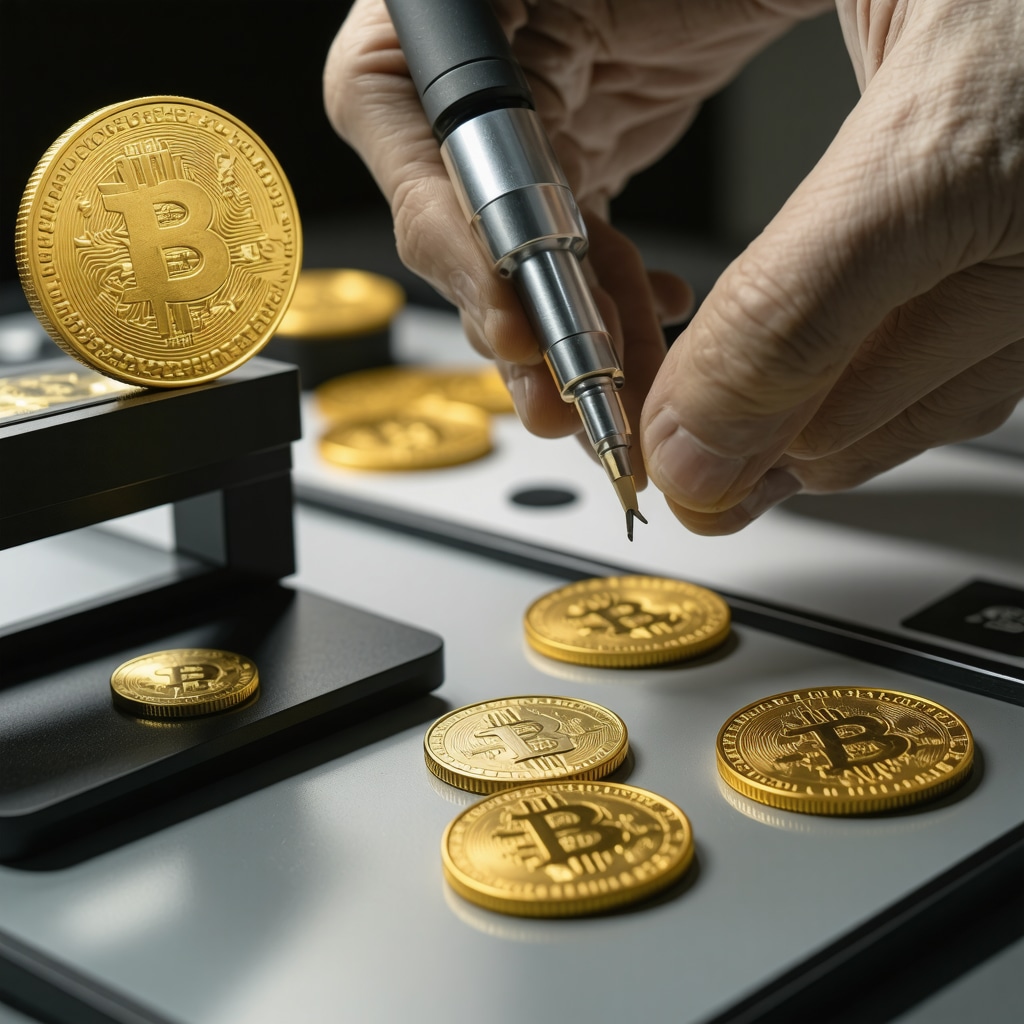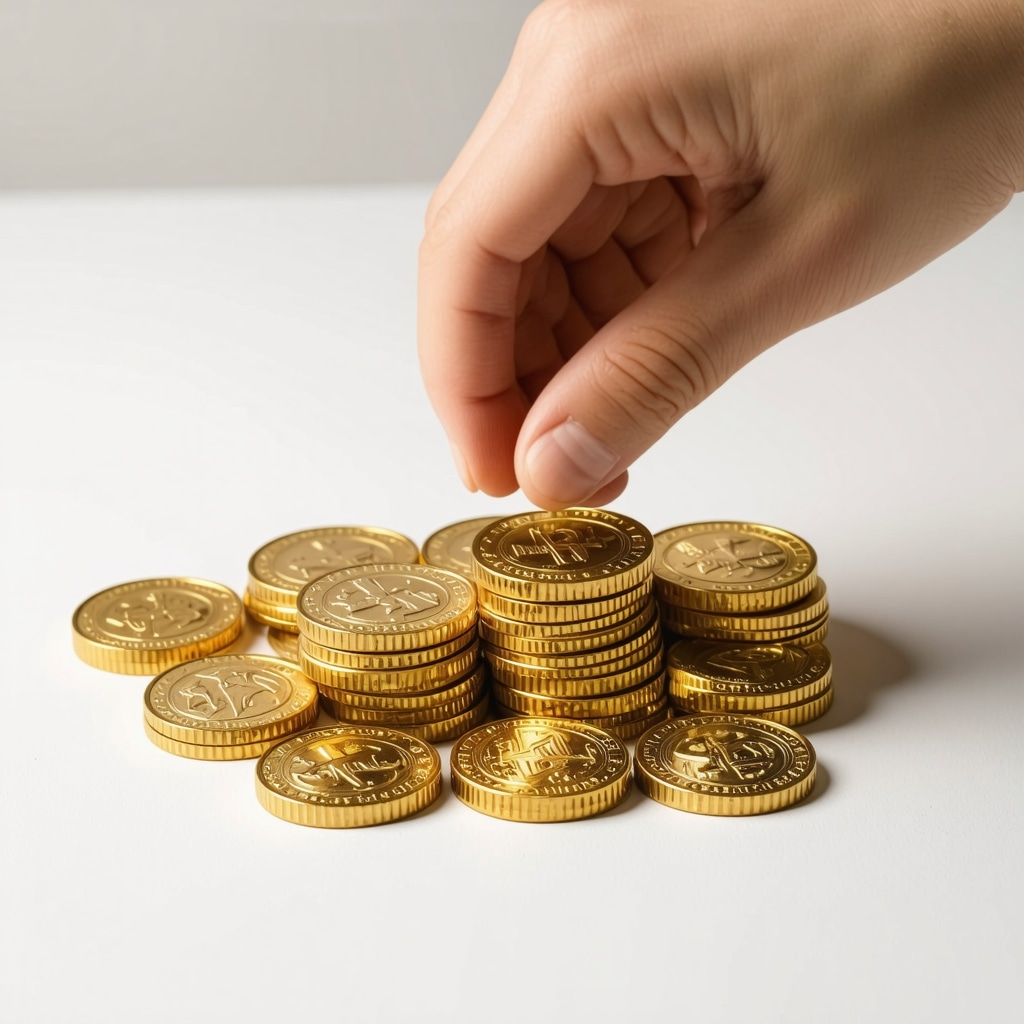Unlocking the Treasure: Why Gold Coins Are a Timeless Investment
For centuries, gold coins have symbolized wealth and security, transcending economic fluctuations and geopolitical uncertainties. For beginners, purchasing gold coins is not only an investment in precious metal but also a tangible asset that offers a sense of ownership and legacy. Unlike digital assets or stocks, gold coins provide physical reassurance, and their intrinsic and collectible values often appreciate over time. However, diving into the world of gold coins requires a nuanced understanding to avoid pitfalls and maximize benefits.
Decoding the Gold Coin Market: Navigating Authenticity and Value
Choosing the right gold coin demands more than just spotting a shiny piece. Authenticity is paramount — counterfeit coins have become increasingly sophisticated, requiring careful scrutiny. New buyers should familiarize themselves with hallmark stamps, weight, purity (typically 22K or 24K), and reputable mint origins such as the American Gold Eagle, Canadian Maple Leaf, or South African Krugerrand. Moreover, market value hinges not only on gold content but also on rarity, historical significance, and condition.
What Should Beginners Know About Balancing Investment and Collectibility?
While some gold coins serve primarily as bullion — valued mostly for their gold content and liquidity — others carry numismatic value, appealing to collectors who prize rarity and provenance. Beginners need to assess their investment goals: are they seeking straightforward wealth preservation or potential premiums from collectible coins? This distinction guides purchasing decisions, influencing how much premium over spot price one might pay and which dealers to trust.
Best Practices for Safe and Smart Gold Coin Purchases
Safety and transparency are crucial in gold coin transactions. Always buy from established dealers with verifiable credentials and positive customer reviews. Consider requesting certificates of authenticity and grading reports from recognized agencies like the Professional Coin Grading Service (PCGS) or Numismatic Guaranty Corporation (NGC). Additionally, understanding market timing can help buyers avoid overpaying during price surges or speculative bubbles.
Storage Solutions: Protecting Your Shiny Asset
Once purchased, securely storing gold coins is essential to maintain their condition and value. Home safes with fireproof and waterproof features provide convenience, while safety deposit boxes at banks offer enhanced security albeit with access limitations. Insurance considerations should not be overlooked — protecting your investment against theft, loss, or damage is a prudent measure that reflects an experienced investor’s mindset.
Integrating Gold Coins into a Diversified Portfolio
Gold coins can serve as a hedge against inflation and market volatility, complementing stocks, bonds, and other assets. For those curious about how physical gold compares with other gold investment vehicles, exploring physical gold versus gold ETFs offers valuable insights into liquidity, risk, and cost structures.
For beginners eager to expand their knowledge, a deep dive into essential tips before buying gold can further enhance decision-making confidence.
Ready to embark on your gold buying journey? Share your experiences or questions below — your insights could illuminate the path for fellow beginners!
Authoritative sources like the United States Mint provide detailed information on coin specifications and official programs, serving as trusted references for newcomers.
Lessons Learned: Insider Tips From My Gold Coin Journey
Reflecting on my own experiences, I recall the excitement and uncertainty that accompanied my first gold coin purchase. One key lesson I learned early on was the importance of patience. Trying to chase the market or jump on every price spike often led to frustration rather than gains. Instead, focusing on consistent, thoughtful acquisitions—aligned with your financial goals—can build a solid foundation. For instance, I found that setting a budget and sticking to it, while researching each coin’s background, made the process less overwhelming and more rewarding.
Another insight involves dealer relationships. I initially bought from various sellers without much vetting, but after encountering a few questionable offers, I now prioritize established dealers with transparent practices. This approach not only reduces risks but also opens doors to exclusive releases and expert guidance. If you’re curious about how to identify trusted dealers, resources like this guide on finding trusted gold dealers can be invaluable.
Beyond Coins: Exploring Other Gold Investment Avenues
While gold coins hold a unique charm and tangible value, diversifying within the gold asset class can enhance portfolio resilience. For example, I ventured into gold ETFs and mutual funds to balance liquidity and growth potential. These vehicles offer easier access to the gold market without the challenges of physical storage or authenticity concerns. Still, understanding their nuances is crucial. I recommend checking out a comparison of gold ETFs and mutual funds to see which aligns better with your investment style.
How Do You Decide Between Physical Gold and Paper Gold?
This is a question I often ponder and discuss with fellow investors. Physical gold—like coins and bars—offers the peace of mind that comes with holding a tangible asset. However, it requires secure storage and can be less liquid. Paper gold instruments, such as ETFs, provide convenience and ease of trading but depend on third-party custodians. Your choice hinges on factors like risk tolerance, investment horizon, and personal preferences. I find that combining both can provide a balanced approach, leveraging the strengths of each.
According to a recent analysis by the World Gold Council, global demand trends indicate that while physical gold remains a favorite for long-term security, gold-backed financial products are gaining traction among younger investors seeking flexibility and lower entry costs. This blend of traditional and modern investment strategies reflects the evolving landscape of precious metals investment (World Gold Council report).
Practical Tips for Staying Ahead in the Gold Market
Keeping abreast of supply and demand dynamics is more than just an academic exercise; it directly affects timing and pricing of your gold investments. For example, I regularly consult analyses like gold market analysis on price drivers to understand how geopolitical shifts or central bank gold purchases might impact market movements.
Additionally, don’t underestimate the power of community. Joining forums, attending webinars, or subscribing to newsletters can expose you to diverse perspectives and insider knowledge that I found invaluable in shaping my strategy.
What about you? Have you dabbled in gold investments or are you contemplating your first purchase? Share your stories, questions, or tips in the comments below—let’s learn together!
Mastering Market Timing: Leveraging Economic Indicators for Smart Gold Coin Purchases
Understanding macroeconomic indicators is a critical skill for the seasoned gold coin investor. Unlike novice approaches that often rely on price movements alone, expert investors delve into metrics such as real interest rates, inflation expectations, currency strength, and central bank policies to anticipate shifts in gold demand and pricing. For instance, when real interest rates turn negative—meaning inflation outpaces nominal interest—gold traditionally shines as a non-yielding asset that preserves purchasing power.
Moreover, geopolitical instability or monetary easing by major economies often triggers safe-haven buying, boosting physical gold demand. Monitoring reports from institutions like the International Monetary Fund (IMF) and the World Gold Council can provide nuanced cues beyond headline news. Integrating these insights with your gold coin acquisition schedule can dramatically improve entry points and portfolio resilience.
How Can Sophisticated Investors Quantify Gold Coin Premiums Relative to Spot Prices?
Premiums on gold coins fluctuate based on minting costs, rarity, demand, and dealer markups. Advanced investors use a combination of spot price comparison, historical premium trends, and coin-specific factors to gauge fair value. For example, bullion coins like the Canadian Maple Leaf often trade close to spot with minimal premium, whereas limited edition or proof coins command substantially higher premiums due to collectibility.
Tools like the Professional Coin Grading Service (PCGS) Price Guide or Numismatic Guaranty Corporation (NGC) databases offer comprehensive market data that can inform pricing strategies. By analyzing these resources, investors can identify undervalued opportunities or avoid overpriced coins, optimizing both short-term trades and long-term holdings.
Advanced Authentication Techniques: Beyond the Basics to Avoid Sophisticated Counterfeits
As counterfeiters employ ever more refined methods, relying solely on visual inspection or weight measurement is insufficient. Experts incorporate technologies such as X-ray fluorescence (XRF) analyzers to non-destructively verify metal composition, ensuring purity claims are accurate. Additionally, ultrasonic testing and magnetometers can detect anomalies invisible to the naked eye.
Another frontier is blockchain-backed provenance tracking, where some modern mints and dealers embed unique identifiers or digital certificates, providing immutable ownership records. This convergence of technology and numismatics not only enhances trust but also adds a layer of liquidity by simplifying verification during resale.
Incorporating Gold Coins Into Complex Portfolio Models: Risk-Adjusted Return Optimization
Gold coins, while traditionally viewed as a static store of value, can be dynamically integrated into multi-asset portfolios to optimize the risk-return profile. By utilizing modern portfolio theory (MPT) and factor analysis, investors can quantify the diversification benefits gold coins provide against equities, fixed income, and alternative assets.
For example, during periods of equity market downturns, gold coins often exhibit low or negative correlation with stocks, thereby cushioning portfolio drawdowns. Quantitative models can determine the optimal allocation percentage—often between 5% to 15%—to balance growth and preservation objectives. Furthermore, incorporating scenario analysis for inflation shocks or currency devaluation periods can illuminate gold’s role as an inflation hedge within the portfolio architecture.
Curious to elevate your gold coin investment strategy with cutting-edge analytics and tools? Dive deeper into our expert resources and join our community forum where seasoned investors share proprietary models and real-world case studies.
For authoritative and detailed market data, the World Gold Council Research Hub offers invaluable insights that can sharpen your investment decisions.
Harnessing Cutting-Edge Verification: Strategies to Outsmart Sophisticated Gold Coin Counterfeits
In an era where counterfeit gold coins have evolved to mimic authenticity with alarming precision, relying solely on traditional verification methods like visual inspection or weight measurements no longer suffices. Expert investors now integrate advanced technologies such as X-ray fluorescence (XRF) analyzers, which non-destructively ascertain the elemental composition of coins, guaranteeing the declared purity levels. Additional modalities like ultrasonic testing detect internal inconsistencies, while magnetometers can expose hidden alloys or tampering attempts invisible to the naked eye.
Furthermore, blockchain provenance tracking emerges as a transformative innovation within numismatics. By embedding unique digital certificates or identifiers, some mints and authorized dealers create immutable ownership records, enhancing transparency and facilitating liquidity through streamlined verification during resale. This fusion of technology and tradition not only fortifies trust but also equips investors with a robust defense against increasingly sophisticated forgeries.
What Analytical Tools Can Experts Employ to Quantify Gold Coin Premiums Accurately?
Evaluating premiums on gold coins demands a multifaceted approach beyond spot price comparison. Seasoned investors utilize comprehensive databases provided by entities like the Professional Coin Grading Service (PCGS) and the Numismatic Guaranty Corporation (NGC), analyzing historical premium trends, minting costs, and rarity indices. This enables identification of undervalued coins and avoidance of inflated markups, optimizing portfolio performance. Incorporating quantitative metrics such as premium-to-spot ratios and liquidity scores further refines acquisition timing and pricing strategy, ultimately enhancing risk-adjusted returns.
Mastering Economic Indicators: Leveraging Macroeconomic Signals for Optimal Gold Coin Acquisition
Beyond price charts, sophisticated investors scrutinize macroeconomic variables to anticipate gold price trajectories. Key indicators include real interest rates, inflation expectations, currency valuations, and central bank monetary policies. For example, negative real interest rates—where inflation surpasses nominal yields—traditionally catalyze heightened gold demand as investors seek to preserve purchasing power. Additionally, geopolitical tensions or quantitative easing initiatives often trigger safe-haven buying, inflating physical gold premiums.
Leveraging reports from authoritative institutions such as the International Monetary Fund (IMF) and the World Gold Council equips investors with nuanced perspectives, enabling anticipatory positioning rather than reactive purchasing. Integrating these economic insights with technical analysis creates a sophisticated framework for timing gold coin acquisitions, enhancing portfolio resilience amid volatility.
Strategic Portfolio Integration: Quantitative Models for Risk-Adjusted Gold Coin Allocation
Incorporating gold coins into complex, diversified portfolios transcends mere hedging; it involves precise optimization of risk-adjusted returns using modern portfolio theory and factor analysis. Empirical data consistently demonstrate gold’s low or negative correlation with equities during market downturns, underscoring its value in mitigating drawdowns.
Quantitative models recommend gold coin allocations typically ranging from 5% to 15%, calibrated through scenario analyses encompassing inflation shocks, currency depreciation, and systemic risk events. By simulating multiple economic environments, investors can tailor allocations that balance growth objectives with preservation imperatives. This dynamic integration, supported by proprietary analytics and real-world case studies, transforms gold coins from static assets into active portfolio components that enhance overall robustness.
Intrigued by these advanced methodologies? Engage with our expert community forum to explore proprietary models and deepen your mastery of gold coin investment strategies.
For comprehensive market intelligence and cutting-edge research, consult the World Gold Council Research Hub, an indispensable resource for discerning investors.

Frequently Asked Questions (FAQ)
What distinguishes bullion gold coins from numismatic coins?
Bullion coins are primarily valued for their metal content and liquidity, typically minted in large quantities with standard purity (usually 22K or 24K). Numismatic coins, conversely, derive value from rarity, historical significance, condition, and provenance, often commanding significant premiums above gold spot price.
How can I verify the authenticity of a gold coin beyond basic inspection?
Advanced authentication includes using X-ray fluorescence (XRF) analyzers for metal composition, ultrasonic testing, magnetometers, and consulting blockchain-backed provenance records when available. Professional grading services like PCGS and NGC provide certification that enhances trustworthiness.
What factors influence the premium over spot price for gold coins?
Premiums depend on minting costs, rarity, demand, condition, and dealer markups. Limited edition or proof coins often carry higher premiums, while standard bullion coins generally trade near spot price with minimal premium.
How do macroeconomic indicators affect gold coin prices?
Indicators such as real interest rates, inflation expectations, currency strength, and central bank policies influence gold demand and pricing. Negative real interest rates and geopolitical uncertainty typically increase gold’s appeal as a safe haven, pushing premiums higher.
What is the recommended allocation of gold coins in a diversified investment portfolio?
Quantitative models often suggest allocating between 5% to 15% of a portfolio to gold coins, balancing risk-adjusted returns by leveraging gold’s low correlation with equities and its role as an inflation hedge.
Should I choose physical gold coins or gold-backed financial products?
Physical gold provides tangible ownership and security but requires secure storage and can be less liquid. Gold ETFs and mutual funds offer convenience and liquidity but depend on custodianship. Combining both can diversify risks and benefits according to personal preferences.
How do professional investors quantify fair value and avoid overpaying?
Experts use historical premium data, grading service price guides, rarity indices, and liquidity scores to assess fair value. This analytical approach helps identify undervalued coins and avoid inflated markups.
What are the best practices for safely storing and insuring gold coins?
Secure storage options include fireproof home safes and bank safety deposit boxes. Insuring gold coins against theft, loss, or damage is essential and should be done through reputable insurance providers with proper valuation documentation.
How can I stay informed about gold market trends and price drivers?
Regularly consult authoritative analyses from institutions like the World Gold Council and IMF, join investor communities, attend webinars, and subscribe to specialized newsletters to maintain informed decision-making.
Can blockchain technology improve gold coin investment security?
Yes, blockchain provenance tracking provides immutable ownership records and verification, reducing fraud risk and enhancing liquidity by simplifying resale authentication.
Trusted External Sources
- World Gold Council Research Hub: Offers comprehensive research and data on gold demand, supply dynamics, investment trends, and market analysis crucial for informed gold investment decisions.
- Professional Coin Grading Service (PCGS): Provides authoritative coin grading, authentication, and price guides that help investors assess coin quality and market value accurately.
- Numismatic Guaranty Corporation (NGC): Renowned for expert coin grading and certification, offering detailed databases and market insights to evaluate numismatic coins.
- International Monetary Fund (IMF): Supplies macroeconomic reports and policy analyses that influence gold market fundamentals, aiding investors in interpreting economic indicators.
- United States Mint: Official source for coin specifications, mint programs, and educational resources that validate coin authenticity and provenance.
Conclusion
Gold coin investment remains a compelling strategy for wealth preservation, portfolio diversification, and inflation hedging. Success in this arena demands a blend of foundational knowledge and advanced expertise—ranging from discerning bullion versus numismatic values, employing cutting-edge authentication techniques, to leveraging macroeconomic insights for optimal timing. Integrating gold coins thoughtfully within a diversified portfolio can enhance risk-adjusted returns and safeguard against market volatility.
Armed with trusted sources, analytical tools, and community engagement, investors can confidently navigate the complexities of gold coin acquisition and management. Embrace this evergreen asset with prudence and strategy, and unlock its full potential as a resilient cornerstone of your financial future.
Ready to deepen your expertise or share your own gold investment journey? Join the conversation, explore our expert resources, and elevate your strategy today!











I’ve recently started exploring gold coins as an investment, and this guide really highlights some essentials that many beginners overlook. The distinction between bullion and numismatic coins, for instance, is so important. I initially thought all gold coins were just about their gold content, but learning how rarity and historical significance can add value was eye-opening. Also, the advice on dealer vetting resonated with me—I almost bought from a less reputable source before doing thorough research on dealers with transparent certificates and grading reports.
One aspect I find particularly challenging is deciding how to balance physical gold coins with more liquid gold ETFs or mutual funds. The post mentions that combining both might offer the best of both worlds, but how do you personally decide what portion to keep physical versus paper gold? For those of you who have tried both, how do you manage liquidity needs while maintaining the tangible security of physical coins?
Lastly, security and storage are concerns I can’t stress enough. The article’s reminder about insuring coins and considering fireproof safes or bank safety deposit boxes is crucial. I’m curious how other investors approach insurance for their collections without incurring prohibitive costs. Any tips or experiences would be appreciated!